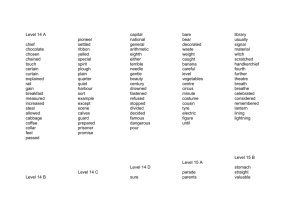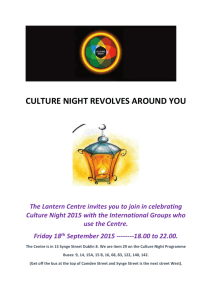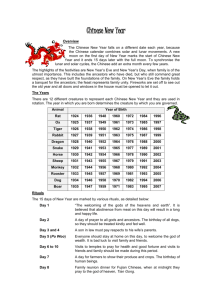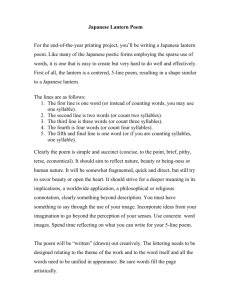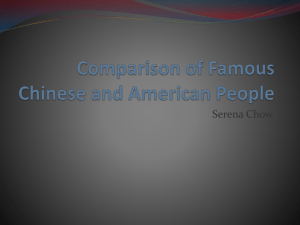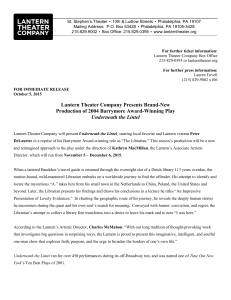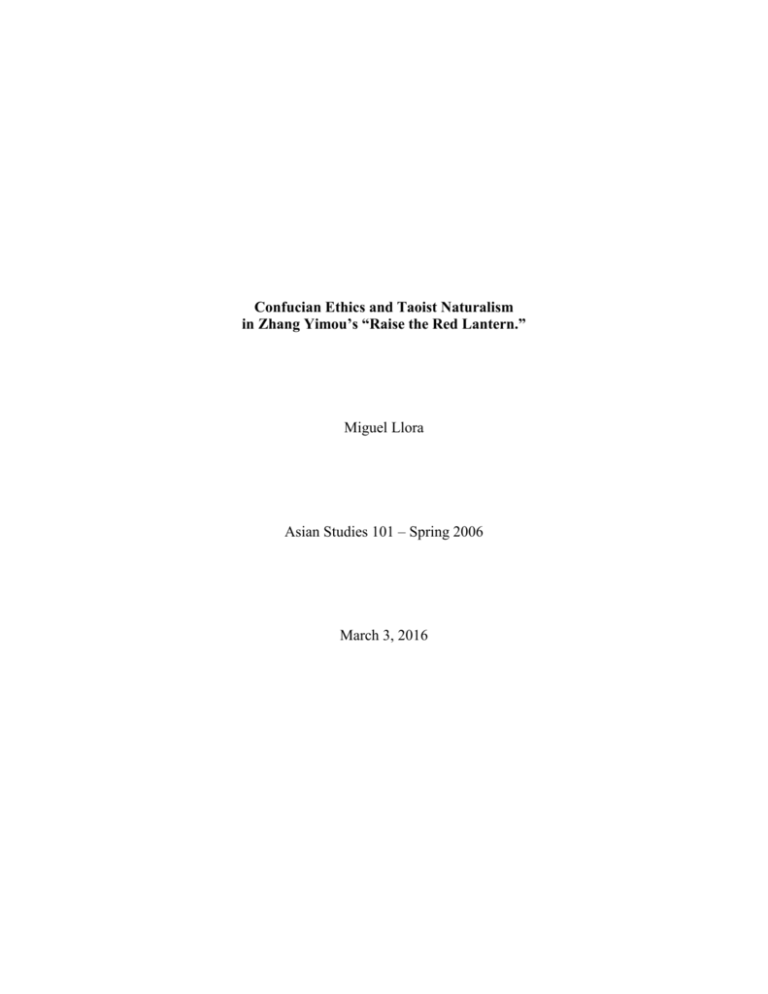
Confucian Ethics and Taoist Naturalism
in Zhang Yimou’s “Raise the Red Lantern.”
Miguel Llora
Asian Studies 101 – Spring 2006
March 3, 2016
Confucian Ethics and Taoist Naturalism in
Zhang Yimou’s “Raise the Red Lantern.”
I.
Introduction
II.
Summary
III.
Criticism of Raise the Red Lantern and Zhang Yimou’s Intent
Although most of the reviews and essays mention the favored wife’s menu
selection, it is depicted as just one of many means of manipulation
practiced by Master Chen and his wives. It is remarkable, however, that
critics and scholars alike have otherwise ignored the central role of food
and dining rituals, so important in Chinese culture. Donald Sutton
acknowledges that Zhang has created rituals solely for dramatic effect,
such as the central act of raising a red lantern to highlight the mater’s
sexual intent for the evening. However, he points out that rituals of every
conceivable type permeate Chinese culture and of li, or proper ritual, is
“inseparable from social mores” and at the heart of Confucian tradition.
Sutton argues that Zhang had to depict procommunist society on the
screen the way that would appeal both to Eastern and Western audiences
and also appease rigid communist contemporary censors. Instead of
criticizing the director’s use of fanciful rituals steeped in visual and and
aural cues, Sutton praises the “invention of the red lantern ritual” as an
effective means of recounting history. The ritual of the lantern is
purposefully charged with sexual tension, is an object of intense
competition, and represents a unifying image that governs the family’s life.
While the specific ritual may not be historically accurate, the behavior of
the family around it is certainly consistent with social history (Fried 142).
IV.
Confucian influence in Raise the Red Lantern
The rituals of Red Lantern can be interpreted either as historical
metaphors for the tyranny of a centuries-old male-dominated society or a
thinly veiled criticism of a contemporary dictatorship; in other words, they
are timeless. So, too, are the food rituals and food games of Master Chen
and his wives. Chinese meals remain communal; each dinner gets a bowl
of rice and a pair of chopsticks. A variety of food is placed on the table all
at once and diners choose what appeals to them. Chinese table manners
have changed little from the ancient Book of Rites. The unraveling of food
customs, and the rituals of commensality, can portend the dissolution of
the family or society. When the third mistress slams down her chopsticks
and storms out of the dining room, perhaps patience is no longer available
in the abundance describes by Cheng: storming away from the table
certainly demonstrates both a short temper and a lack of manners. It also
delivers a powerful message, one that is understood in virtually all cultures
(Fried 143).
V.
Exploring the Tao through food in Raise the Red Lantern
The pairing of yin and yang is also achieved through contrasting the
textures of crisp and soft, colors, flavors, fragrances and cooking methods.
Flavorings and seasonings also reveal the yin and yang pairing principle in
sweet and sour (sugar and vinegar), soy sauce and rice wine, ginger and
scallion, and salt and pepper. Chinese food expert Barbara Tropp explains
the principle’s application with chili: while chili alone presents a strong
yang taste, adding a pinch of sugar (yin) rounds out the flavor; what Tropp
describes as a “fiery full flavor instead of just fire.” She adds that a
Chinese cook’s ability to harmonize yin and yang in each dish is “inbred
in the culture…a gentle intuition and a visual and sensory confirmation of
what does and doesn’t go together” (Fried 136-137).
VI.
Of Flutes and Things – More Tao in Raise the Red Lantern
In classical legend the flute is the emblem of Han Xiangzi, one of the
Eight Immortals of Daoism. This legendary flute player possessed the
power of causing miraculous growth and flowering in plants, and popular
legend connects the flute to romance (Yanmei Wei 24). In another legend,
Lan Caihe, a female Daoist immortal, warns of the temporal and transitory
nature of pleasure, feeling evoked by the melancholy and haunting melody
of Feipu’s flute. Further, we might view the flute as a phallic symbol and
the “act of performing upon it as the displacement of one’s erotic desire”
(24). Songlian has keepsake flute, sole memento of her deceased father,
among her personal things. It is not coincidental that Chen, master of her
physical and emotional life, controls the symbol of her erotic desire. He
destroys the flute and sets in motion Songlian’s revenge against Yan’er
(the jealous, spurned maid who Songlian accuses of the theft) and the
ensuing series of catastrophic events (Walsh 199).
VII.
Songlian fought the law and the law won.
In “old” China (which still exists today, Zhang constantly reminds his
audience), there were few alternatives for women. They either killed
themselves (suicide of women is another rarely explored subject in
traditional China studies) or had others killed… There may be hidden
metaphors here and there, but basically these two films [here he means
The Story of Qiu Ju and Raise the Red Lantern – addition mine] are not
terribly concerned with the current state of politics in China. Songlian
fought back and lost. Qiu Ju fought, won, and yet was not quite sure
exactly what she had won. But both tried their utmost to maintain their
humanity and sexuality (of a gentle kind) throughout: they never blamed
others, least of all the men in their lives, for their own actions. Chinese
women, these two films suggest, are at least brave enough to try and come
to terms with the Chinese past (Young 1160).
VIII.
Conclusion – Bringing it all together with Zhang Yimou as a critique on
oppression and its devastation on human relationships
List of References
Fried, Ellen J. “Food, Sex, and Power at the Dining Room Table in Zhang Yimou’s Raise
the Red Lantern.” in Anne L. Bower, ed. Reel Food – Essays on Food and Film.
New York: Routledge, 2004.
Tong, Su. Raise the Red Lantern: Three Novellas. trans. Michael S. Duke. New York:
William Morrow and Company, Inc. 1993.
Walsh, Bettye S. “Family in the Seventh Art – Modern Chinese Film: An Analysis of
Red Sorghum, Raise the Red Lantern, and To Live.” in Howard Giskin and Betty
S. Walsh eds. An Introduction to Chinese Culture through the Family. New York:
State University of New York Press, 2001.
Young, John Dragon. “Film Review of Raise the Red Lantern and The Story of Qiu Ju.”
American Historical Review. Oct. 1993.


